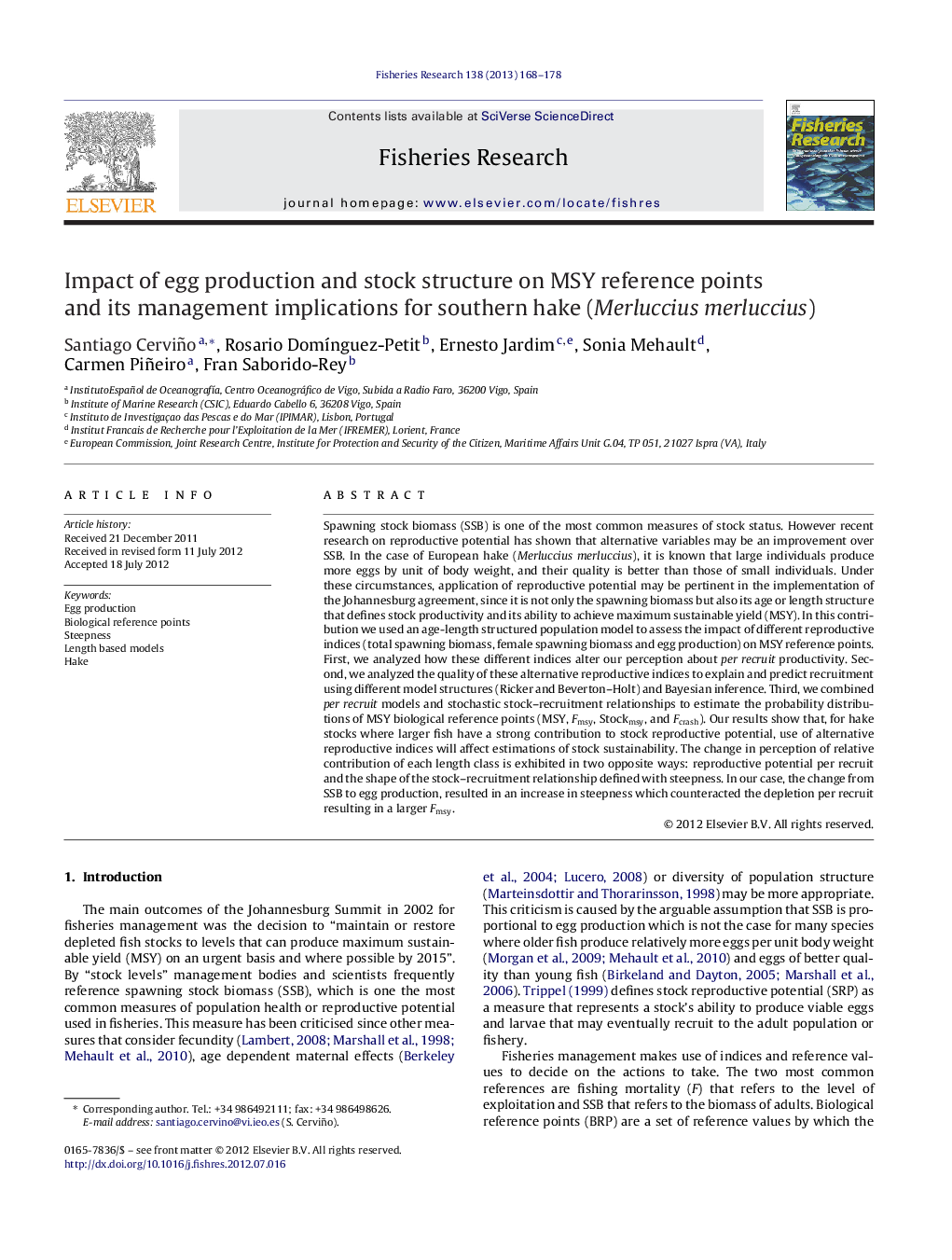| کد مقاله | کد نشریه | سال انتشار | مقاله انگلیسی | نسخه تمام متن |
|---|---|---|---|---|
| 4543231 | 1626830 | 2013 | 11 صفحه PDF | دانلود رایگان |

Spawning stock biomass (SSB) is one of the most common measures of stock status. However recent research on reproductive potential has shown that alternative variables may be an improvement over SSB. In the case of European hake (Merluccius merluccius), it is known that large individuals produce more eggs by unit of body weight, and their quality is better than those of small individuals. Under these circumstances, application of reproductive potential may be pertinent in the implementation of the Johannesburg agreement, since it is not only the spawning biomass but also its age or length structure that defines stock productivity and its ability to achieve maximum sustainable yield (MSY). In this contribution we used an age-length structured population model to assess the impact of different reproductive indices (total spawning biomass, female spawning biomass and egg production) on MSY reference points. First, we analyzed how these different indices alter our perception about per recruit productivity. Second, we analyzed the quality of these alternative reproductive indices to explain and predict recruitment using different model structures (Ricker and Beverton–Holt) and Bayesian inference. Third, we combined per recruit models and stochastic stock–recruitment relationships to estimate the probability distributions of MSY biological reference points (MSY, Fmsy, Stockmsy, and Fcrash). Our results show that, for hake stocks where larger fish have a strong contribution to stock reproductive potential, use of alternative reproductive indices will affect estimations of stock sustainability. The change in perception of relative contribution of each length class is exhibited in two opposite ways: reproductive potential per recruit and the shape of the stock–recruitment relationship defined with steepness. In our case, the change from SSB to egg production, resulted in an increase in steepness which counteracted the depletion per recruit resulting in a larger Fmsy.
Journal: Fisheries Research - Volume 138, February 2013, Pages 168–178